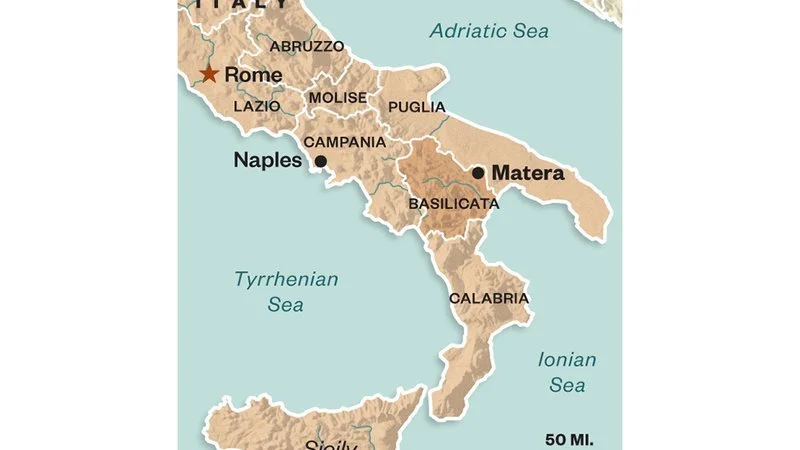The forgotten cities of Italy: Matera
Matera, Basilicata
It’s difficult to imagine that Matera would have one day been competing with cities like Siena and Ravenna to be the European Capital of Culture in 2019. Back in the 50’s, Matera in one of the forgotten southern regions Basilicata, was known as the ‘shame of Italy’ and in its ancient warren of caves, its inhabitants were languishing in the most dismal poverty.
There’s no other place in Italy that has undergone such a dramatic rebirth in recent years and its history has always fascinated me and I’m sure that it will do the same for you. First occupied during the Paleolithic age, the natural caves were slowly burrowed deeper and expanded into living spaces by peasants and artisans throughout the classical and medieval eras. Fast forward a few centuries and by the 30’s these cave dwellings offered less than ideal living conditions, as they had no heat, light or sanitation. Malaria was rife and the infant death rate was high. And this continued until the 1950’s.
It was only then that a government investigation revealed the true state of Matera’s slums and they were then declared as uninhabitable. New districts had to be built on the edges of the Sassi (stone caves) to rehouse everyone from the slums and so most of the Sassi were left abandoned. Walking the cobbled streets, you can still sense the haunting atmosphere of a ghost town, but luckily you also see many signs of the renovation plan taking place to restore the Sassi to their former glory.
The modern restoration of these caves was indeed a feat of inventiveness, and along with atmospheric and unique hotels, there are now cave restaurants, cave cafes, cave galleries and cave clubs. Visitors to Matera can now explore a small part of the city’s underground water system, excavated 15 metres into the rock and the sheer size of it is enough to leave you in awe. It’s no wonder that this incredible construction helped Matera achieve UNESCO World Heritage status in 1993.
It’s easy to see why Matera was chosen to double as ancient Jerusalem in many films, including Mel Gibson’s The Passion of the Christ. Its landscape remains unchanged through thousands of years and its magical quality can only be experienced in person. Matera may have the looks of a movie star, but it also has a very real and at times harrowing past and this is what gives it so much character.
The magic of the Sassi is very fragile though and it has to be preserved so that it can continue to tell its story. My advice to you would be to visit now and enjoy its magic before endless queues of tourists will take some of the shine away from one of the most captivating cities in Italy!




